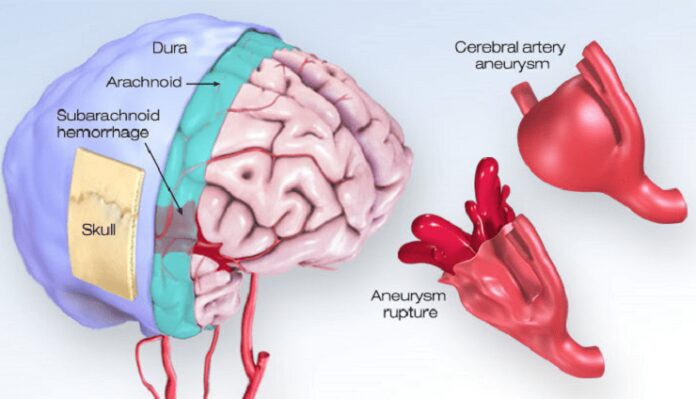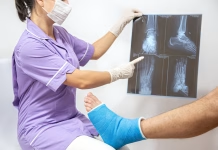The human body is an amazing and complex thing, made up of different parts that work together to keep us going every day. Inside us, we have organs, bones, and blood vessels that carry blood and nutrients throughout our bodies.
Sometimes, though, these blood vessels can get clogged or twisted together. This usually happens in our brains and spinal cords, but it can occur anywhere in the body. When this happens, it’s called an arteriovenous malformation, or AVM for short.
When the blood vessels get all tangled up, it stops the flow of oxygen, which puts a lot of pressure on the vessels. Eventually, they can burst, causing a stroke. A stroke is a serious problem that can cause different symptoms and is usually seen in the brain and spinal cord, but it can happen in other parts of the body too.
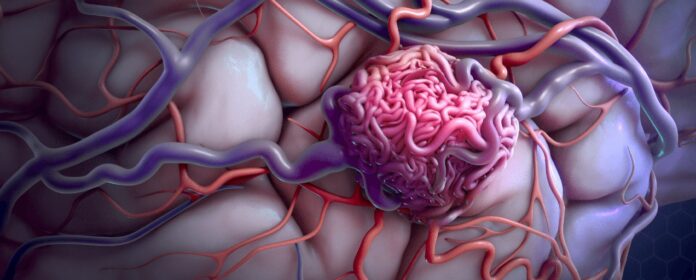
Symptoms Of AVM-Related Strokes That You Shouldn’t Ignore
A minor ache can be a hidden crisis that goes unnoticed. Although AVM strokes are uncommon, it’s always helpful to know the symptoms of an arteriovenous malformation.
Brain AVM can lead to permanent brain damage and stroke.
Brain AVM causes the following symptoms;
- Bleeding in a section of the brain,
- Constant headaches (mild to severe),
- Acute nausea and vomiting,
- Dizziness,
- A sense of floating,
- Muscle weakness or twitching,
- Hallucinations,
- The trouble with movement,
- Trouble with memory, speech, balance, and even vision.
Spinal cord AVM symptoms include
- A constant back pain; can feel like tiny knife stabs, which can be sudden or persistent.
- Pain is likely to occur in the lower body, such as the legs, toes, and even hips.
Other areas with AVM may or may not show symptoms, depending on their location and size. Symptoms may consist of;
- Coughing up blood if AVM is in your lungs,
- Black or dark stools if it’s your digestive tract,
- Numbing sensations,
- Muscle weakness and constant tiredness are some of them.
Consult your doctor immediately if something doesn’t seem right.
Causes Of AVM-Related Strokes
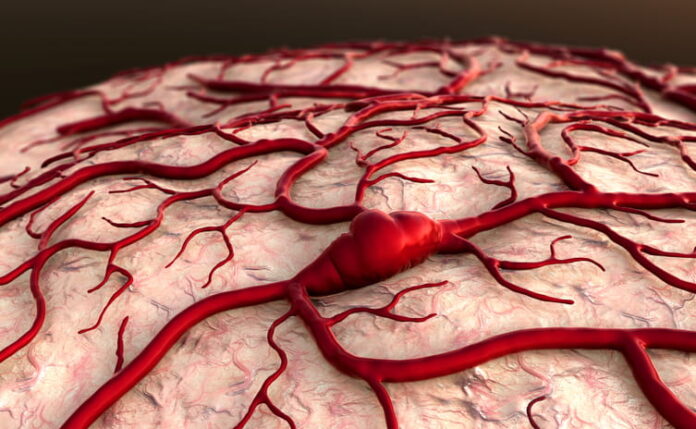
The actual cause of AVM strokes is still unknown. However, it can be based on genetics. Researchers believe that either people are born with it, or it can happen at a later stage in life, between the ages of 15 to 20. One should take note that arteriovenous malformation can even occur between the ages of 45 to 50.
Arteriovenous malformation (AVM) is an abnormal tangle of blood vessels in the brain or spinal cord. Normally, arteries carry oxygenated blood from the heart to the brain, and veins carry deoxygenated blood back to the heart. However, in the case of AVM, the arteries and veins are directly connected without the presence of capillaries. This causes a disruption in blood flow and increases the risk of bleeding and strokes.
Symptoms of AVM-Related Strokes:
The symptoms of AVM-related strokes can vary depending on the size, location, and severity of the malformation. Some common symptoms include:
- Headaches: Severe headaches, often described as a sudden and intense “thunderclap” headache, can occur due to the increased pressure within the blood vessels.
- Seizures: AVMs can trigger abnormal electrical activity in the brain, leading to seizures. Seizures can range from mild to severe and may involve convulsions or loss of consciousness.
- Neurological Deficits: AVMs can disrupt the normal functioning of the brain, leading to various neurological deficits. These may include weakness or numbness in the limbs, difficulty speaking or understanding language, vision problems, balance and coordination issues, and cognitive impairments.
- Intracranial Hemorrhage: One of the most serious complications of AVM is bleeding within the brain, known as intracranial hemorrhage. This can result in a sudden and severe headache, vomiting, loss of consciousness, and neurological deficits. Intracranial hemorrhage requires immediate medical attention as it can be life-threatening.
Causes of AVM-Related Strokes:
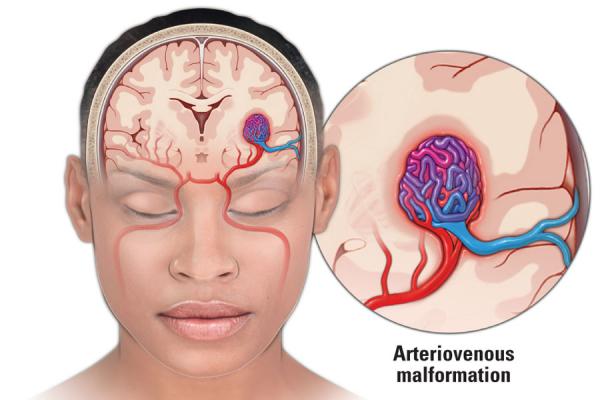
The exact causes of AVMs are still not fully understood. Most AVMs are present at birth, but they can go undetected until symptoms manifest or a stroke occurs. Some potential factors that may contribute to the development of AVMs include:
- Genetic Factors: There is evidence to suggest that certain genetic mutations may increase the risk of developing AVMs. However, more research is needed to fully understand the genetic components of this condition.
- Abnormal Blood Vessel Development: During fetal development, the formation of blood vessels may be disrupted, leading to the formation of AVMs. The exact mechanisms behind this abnormal development are not yet fully understood.
- Hereditary Conditions: In some cases, AVMs can be associated with hereditary conditions such as hereditary hemorrhagic telangiectasia (HHT), also known as Osler-Weber-Rendu syndrome. HHT is a genetic disorder that affects blood vessel formation and can increase the risk of developing AVMs.
- Trauma: In rare cases, trauma to the head or neck area may contribute to the development or rupture of an AVM. However, most AVMs are present from birth and are not caused by trauma.
Diagnosis and Treatment:
Diagnosing AVMs and preventing AVM-related strokes requires a comprehensive evaluation by medical professionals. Diagnostic procedures may include:
- Magnetic Resonance Imaging (MRI): MRI scans can provide detailed images of the brain and help identify the presence and location of an AVM.
- Computed Tomography (CT) Scan: CT scans can be used
- Cerebral Angiography: Cerebral angiography is an invasive procedure that involves injecting a contrast dye into the blood vessels of the brain. This allows for detailed visualization of the AVM and its blood supply, helping determine the size, location, and complexity of the malformation.
- Electrophysiological Monitoring: In some cases, electrophysiological monitoring may be conducted to evaluate the electrical activity of the brain and identify any abnormal patterns or seizures associated with the AVM.
- Treatment Options: The treatment approach for AVM-related strokes depends on several factors, including the size and location of the AVM, the presence of symptoms, and the risk of future complications. Treatment options may include:
- Surgical Intervention: In some cases, surgical removal of the AVM may be considered. This involves a craniotomy, where the skull is opened, and the AVM is carefully excised. Surgical intervention is typically recommended for small and accessible AVMs.
- Endovascular Embolization: Endovascular embolization is a minimally invasive procedure where a catheter is guided through the blood vessels to the AVM. Embolic agents are then injected to block the blood flow and reduce the risk of bleeding. This procedure is often used as a preoperative treatment to reduce the size and complexity of the AVM.
- Stereotactic Radiosurgery: Stereotactic radiosurgery is a non-invasive treatment option that uses highly focused radiation beams to target and destroy the AVM. This procedure is suitable for smaller AVMs that are deep-seated or difficult to access surgically.
Conclusion
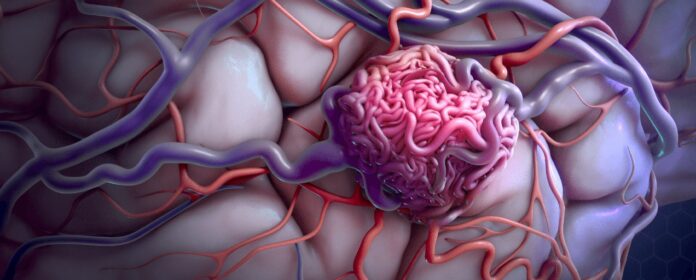
There is a lot of stigma attached to arteriovenous malformation. There’s no pill to prevent it from happening, but to ensure that it doesn’t happen to you, keep a habit of eating nutrient-rich foods that are good for your heart and body. Accumulate a diet plan if certain foods don’t suit you.
One thing to not skip is exercising. When we exercise, endorphins are released in the body, which contributes to more oxygen in the body and a healthy heart. Movement is crucial. Whether it is cardio, weight training, pilates, dancing, or even a walk, do what feels suitable for your mind and body. Our bodies are our homes. Make sure to take care of it, as you’ve only got one.
